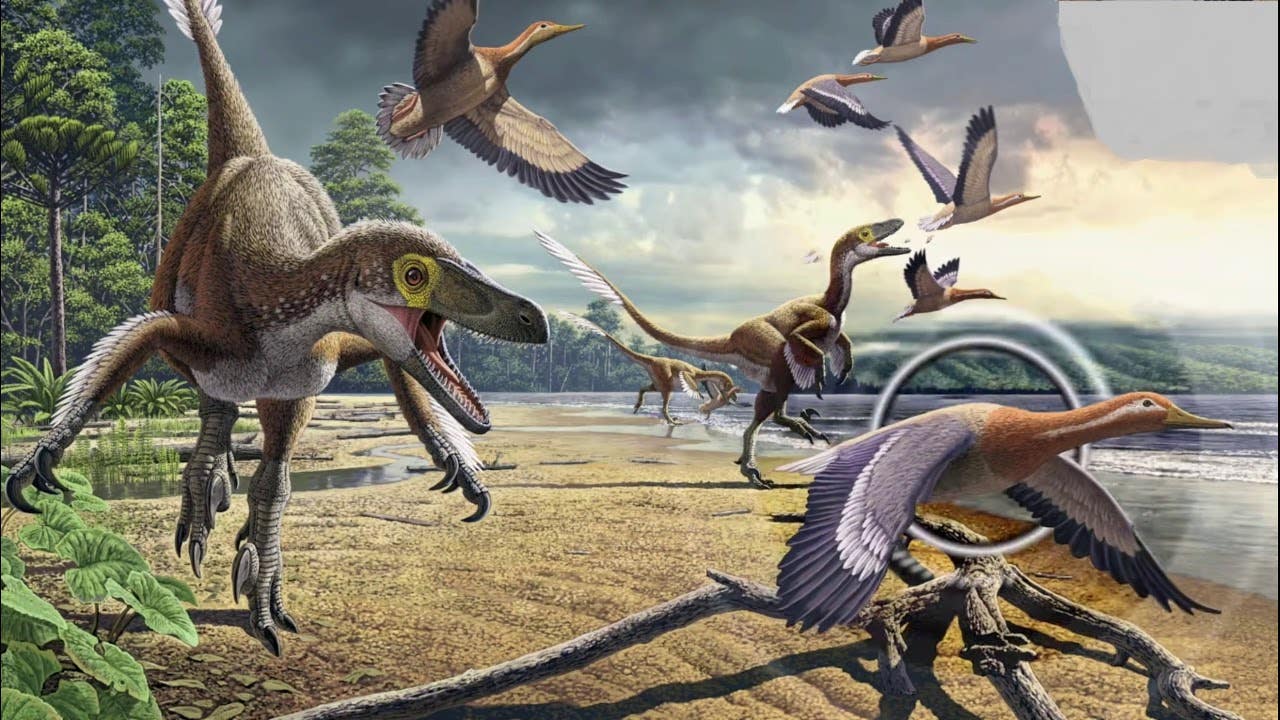Asteroid impact that killed the dinosaurs also triggered mass bird evolution
A study examined the evolutionary trajectory of all major bird groups and found evidence marking critical evolutionary steps as birds evolved into more than 10,000 living species

The impact of an asteroid 66 million years ago marked the end for non-avian dinosaurs but began an evolutionary journey for the early ancestors of birds. (CREDIT: CC BY-SA 3.0)
The impact of an asteroid 66 million years ago marked the end for non-avian dinosaurs but began an evolutionary journey for the early ancestors of birds. The fossil record reveals that these ancestors embarked on their evolutionary path after the mass extinction event caused by the asteroid.
However, researchers weren't sure how this story would be reflected in bird genomes until now. A University of Michigan study has pinpointed significant changes in bird genomes triggered by the end-Cretaceous mass extinction event, contributing to the remarkable diversity of living birds.
This study, published in the journal Science Advances, investigated the evolutionary trajectory of all major bird groups. It uncovered "genomic fossils" in bird DNA, marking crucial evolutionary steps that led to over 10,000 living bird species.
"By studying the DNA of living birds, we can try to detect patterns of genetic sequences that changed just after one of the most important events in Earth's history," explained Jake Berv, the study's lead author and a former Michigan Life Sciences Fellow. "The signature of those events seems to have imprinted into the genomes of the survivors in a way that we can detect tens of millions of years later."
A genome consists of four nucleotide molecules—A, T, G, and C—whose order defines the "blueprint" of life. Sometimes, the DNA code evolves, altering the overall composition of nucleotides across the genome. These compositional changes are vital for genetic variation and an organism's evolutionary potential.
Researchers discovered that the mass extinction event caused shifts in nucleotide composition, influencing bird development as hatchlings, their adult size, and their metabolism. For instance, within 3 to 5 million years of the extinction, surviving bird lineages tended to develop smaller body sizes.
Additionally, more species became "altricial," meaning they were still very embryonic when they hatched and required parental care for weeks. In contrast, "precocial" birds like chickens and turkeys hatch ready to fend for themselves.
Related Stories
"We found that adult body size and pre-hatching development patterns are two important features of bird biology we can link to the genetic changes we're detecting," said Berv, now a Schmidt AI in Science postdoctoral fellow at U-M's Michigan Institute for Data & AI in Society.
One of the biggest challenges in evolutionary biology and ornithology is determining the relationships between major bird groups—the structure of the tree of life for living birds. Over the past 15 years, researchers have been using increasingly large genomic data sets to address this problem.
Traditionally, they used statistical models with strong assumptions to study the evolution of bird genomes. These models assume that the DNA composition, the proportion of A, T, G, and C nucleotides, remains constant across evolutionary history.
In late 2019, Berv started collaborating with Stephen Smith, a U-M professor of ecology and evolutionary biology. Smith was developing a software tool to more accurately track DNA composition over time and across different branches of the tree of life.
This tool allowed the researchers to relax the assumption that DNA composition remains constant, enabling the "model" of DNA evolution to vary across the evolutionary tree and identify places where there were likely shifts in DNA composition.
For this new research, these shifts were concentrated within about 5 million years of the end-Cretaceous mass extinction. This approach also allowed the researchers to estimate which bird traits were most closely associated with these shifts in DNA composition.
"This is an important type of genetic change that we think we can link to the mass extinction event," Berv said. "As far as we know, changes in DNA composition have not been previously associated with the end-Cretaceous mass extinction in such a clear way."
Daniel Field, a professor of vertebrate paleontology at the University of Cambridge and a co-author of the study, has been interested in understanding how the end-Cretaceous mass extinction affected bird evolution. He provided guidance related to early bird evolution following the mass extinction.
"We know that mass extinction events can dramatically affect biodiversity, ecology, and organismal form. Our study emphasizes that these extinction events can actually influence organismal biology even more profoundly—by altering important aspects of how genomes evolve," Field said. "This work furthers our understanding of the dramatic biological impacts of mass extinction events and highlights that the mass extinction that wiped out the giant dinosaurs was one of the most biologically impactful events in the entire history of our planet."
By relaxing the typical assumptions used in evolutionary biology, the researchers are gaining more nuanced insights into the sequence of events in the early history of birds.
"We have typically not looked at the change in DNA composition and model across the tree of life as a change that something interesting has happened at a particular point in time and place," Smith said. "This study illustrates that we have probably been missing something."
Note: Materials provided above by The Brighter Side of News. Content may be edited for style and length.
Like these kind of feel good stories? Get The Brighter Side of News' newsletter.
Rebecca Shavit
Science & Technology Journalist | Innovation Storyteller
Based in Los Angeles, Rebecca Shavit is a dedicated science and technology journalist who writes for The Brighter Side of News, an online publication committed to highlighting positive and transformative stories from around the world. With a passion for uncovering groundbreaking discoveries and innovations, she brings to light the scientific advancements shaping a better future. Her reporting spans a wide range of topics, from cutting-edge medical breakthroughs and artificial intelligence to green technology and space exploration. With a keen ability to translate complex concepts into engaging and accessible stories, she makes science and innovation relatable to a broad audience.



